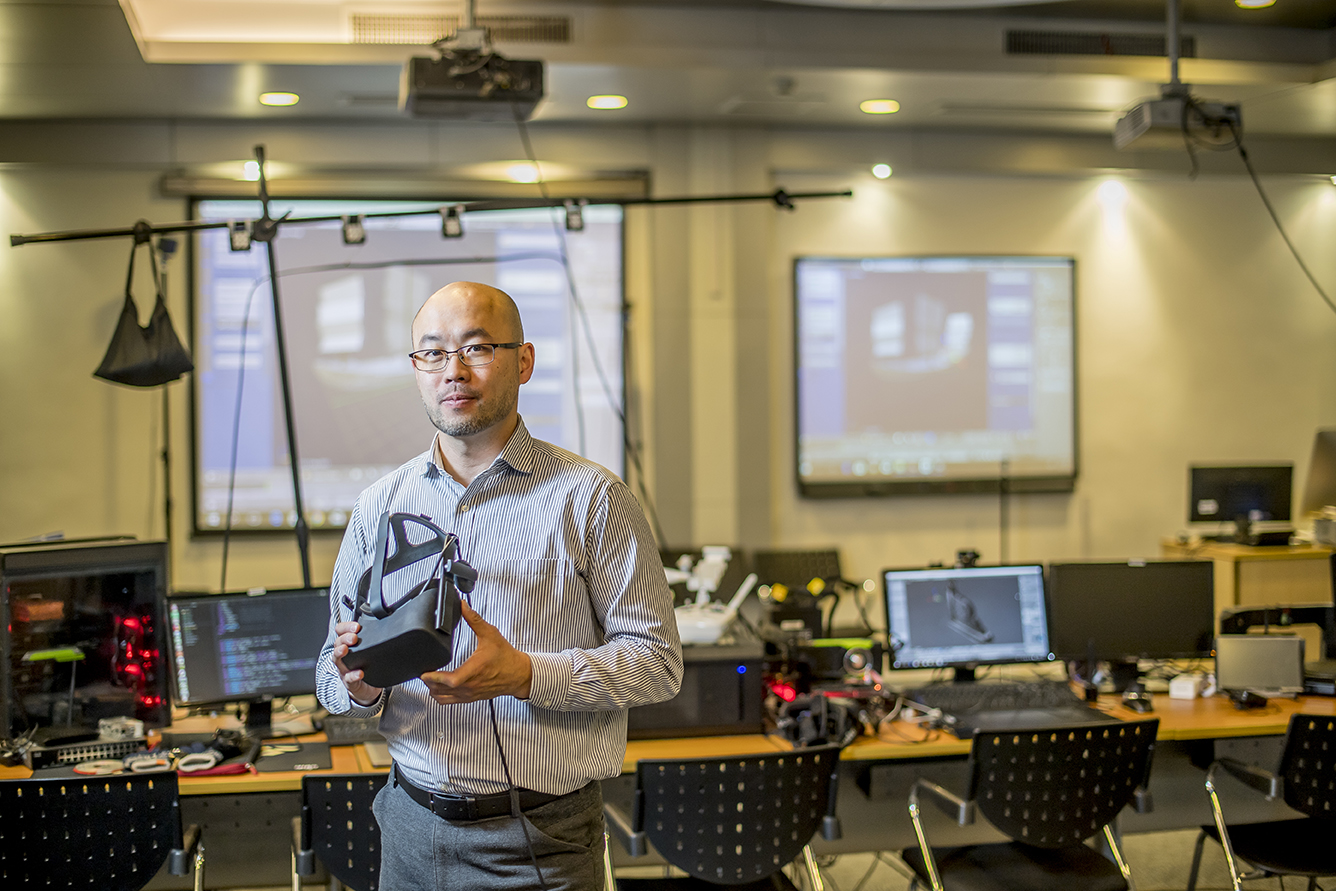
April 9, 2018, by Sophie Moyses
Virtual Reality (VR) and beyond: Professor Eugene Ch’ng
Professor Eugene Ch’ng, Director of NVIDIA
Joint’Lab on Mixed Reality at our Ningbo China Campus, talks about his research into Virtual
Reality and how in the future, the past will be as
accessible as the present.
Can you explain your research?
I’m an expert in Virtual Reality (VR) and associated technologies such as Augmented Reality (AR), and interactive 3D (i3D). By saying that I’m an expert, I mean that I have had over 20 years of practical experience developing Virtual Reality projects in the areas of architecture, computer games, defence applications, and for the past 15 years, archaeology and cultural heritage. Being both an artist and a computer scientist can be handy as I have skills to not only design the aspects of a VR project requiring 3D modelling and scene design, but I also have the technical capacity to assemble VR workstations and develop and implement codes which power VR applications.
My formal training does help – Fine Arts, Interior Architecture (Undergraduate), Computer Science (Master), Electronics, Electrical and Computer Engineering (PhD).
I’m also an associate editor for Presence: Teleoperators & Virtual Environments, and have run two special issues on Virtual Reality for Cultural Heritage.
How will your research affect the average person?
Screens and displays saturate our lives now and will continue to do so in the years to come. They will eventually ‘disappear’ as wearables, allowing us to overlay the virtual (virtual objects and scenes) onto the real world (as in augmented reality), it will also allow us to be completely immersed in a virtual world (ie virtual reality).
My research on Mixed Reality interfaces, looking into how people interact and are affected by virtual environments, will impact the average person who will use such devices for accessing any kinds of information via immersive displays and interactive devices. The immediate impact will be the learning and sharing of cultural heritage. I’m talking not only about ancient heritage, but heritage from the near past where memories are still living and can be shared. My recent TEDxNingbo ‘The Virtual Past within Future Cities’ talk has a phrase on the nature of my research “in the future the past will be as accessible as the present”.
What are some of the collaborations you are involved in?
I work with both cultural institutions, researchers from other universities and large industry partners. Many of the large funded projects I’m involved in require an interdisciplinary team with skills and expertise from multiple domains.
Projects such as the £2.5m ‘Lost Frontiers’ project can only work if you’ve got archaeologists, geologists, people in the genomics group (Warwick), palaeoenvironmentalist and computer scientists.
I’m a computer scientist within the group of people i’ve been working with for 15 years. This also goes with the AHRC Curious Travellers project.
Within China, my cultural heritage projects involve three main museums – Ningbo Museum, Ningbo Bang Museum and China Port Museum. Ningbo Museum and Ningbo Bang museum have more concrete projects defined and in place.
I also have three PhD students placed within China’s large corporations – JD.com (largest online retail, Big Data), NVIDIA (AI and Visual Computing) and Johnson and Johnson Medical Shanghai (Big Data).
Wyatt Lin works within JD.com as a PhD intern, this is an exemplary collaboration which took a lengthy amount of time and effort for building trust prior to collaboration. The project looks into customer purchase behaviour based on user activities prior to purchase. This will directly affect the ecommerce’s strategic development in targeted recommendations and personalisation with big data. Professor Natasa Milic-Frayling is a co-supervisor at the UK campus who has great inputs into the project. We do work across campuses.
What can students expect when they come to the University of Nottingham Ningbo China?
Expertise are scattered across Nottingham’s three campuses. As it is, the fabulous China campus is the second largest with a pool of expertise in specific areas. The fact that China is presently the world’s second largest economy means that there are highly strategic investments and developments in the Sciences, Technology and the Creative Cultural Industry. Students coming here will get the opportunity to not only witness and live the quick-paced adoption of technology (ie WeChat, Alipay and a host of apps useful for lifestyles), but be part of both large and emerging companies pushing China’s economy forward.
Professors here are linked to a pool of global companies based in China. The New Silk Road, termed the Belt & Road Initiative, will drive even greater and speedier trade worldwide. Linked to the Belt & Road Initiative is the ancient Silk Road spanning thousands of years of trade along multiple routes. This culture and lifestyle is another of China’s attractions. In development for over 5,000 years with over 800,000 cultural heritage sites available to explore, you’ll want to stay forever!
No comments yet, fill out a comment to be the first

Leave a Reply